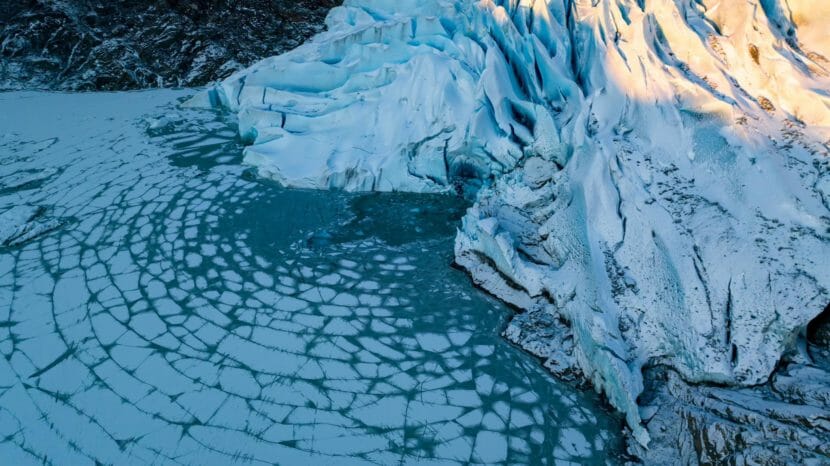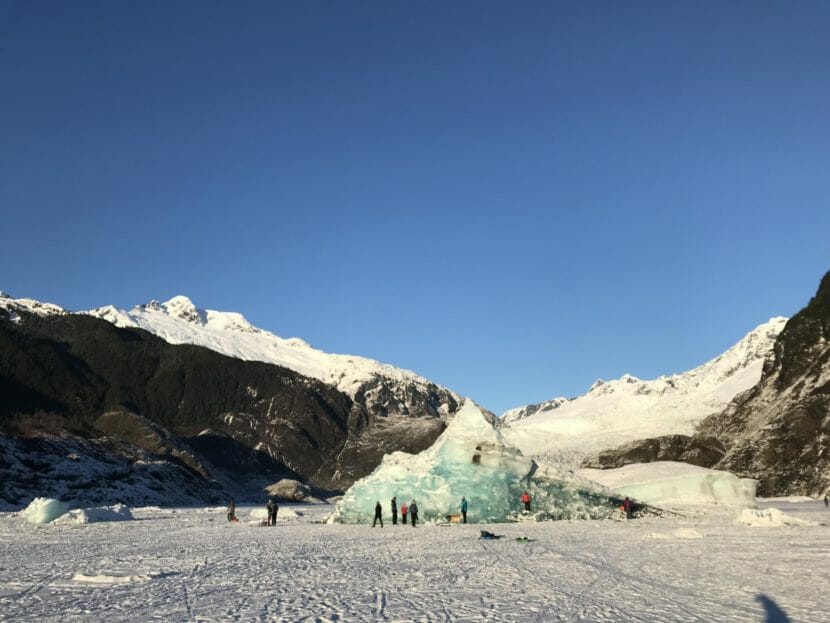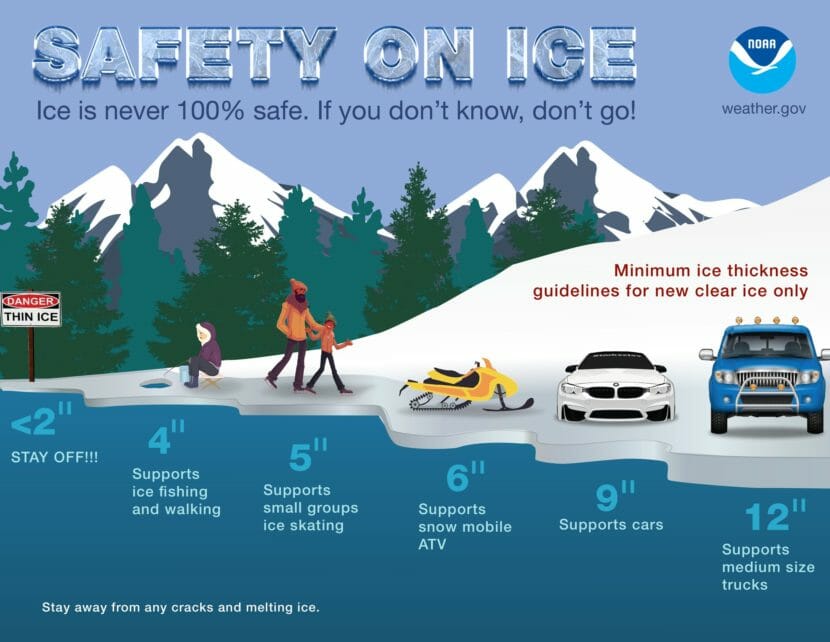
With colder, drier air spilling in from Canada, a thick sheet of ice quickly formed over Mendenhall Lake over the last week.
After an unseasonably warm and wet winter last year, Nordic skiers, climbers and hikers were especially eager to get out and see the glacier up close.
Ahead of the sunny weekend in Juneau, many were turning to Brian Weed.
“People ask me like, have you drilled it? Are you gonna go out and drill it?” he said.
Weed, a Juneau local and administrator of the popular Facebook page Juneau’s Hidden History, measures ice thickness at the lake each year to help people make safe decisions. After a busy weekend, Weed ventured out on Monday for the first time this winter along the lake’s eastern shoreline.
Weed saw several people venturing out beyond where he was comfortable. He said he often observes people breaking the most important rule.
“I can’t tell you how many people I’ve seen walk right up to the face of the glacier to touch it. And they’re probably standing on two inches or less of rotten ice,” he said.

The National Weather Service’s guidelines recommend that people keep a distance of at least 300 yards when approaching the glacier. Ice thins out considerably around the terminus, and frequent, unpredictable calving creates an additional risk.
“All it’ll take is one small chunk of the glacier coming off to turn that whole area in front of the glacier back to water,” Weed said.
NWS put out a reminder about ice thickness standards via Twitter and Facebook going into the weekend. They say 4 inches is good for ice fishing and walking, 5 inches supports small groups of ice skaters and 6 inches supports snowmachines.

The NWS does not monitor ice conditions. Meteorologist Greg Spann said ice thickness varies across the lake, which makes it especially hard to make solid judgments.
“It’s very possible to have some patches that have thin ice, some patches that don’t have thin ice,” Spann said. “And you very much do not want to be the individual who discovers the thin patch of ice.”
Spann said that normal freeze-thaw cycles are another added challenge when it comes to ice safety. Though the ice on Mendenhall Lake is new, meteorologists expect it will freeze and thaw several times this winter. That will cause additional cracks and weak spots across the lake.
If you do go out on the ice, there are a few extremely dangerous areas to avoid. Areas of flowing water around river and creek mouths cause ice to thin, especially around Nugget Falls.
Icebergs should also be avoided. They are generally surrounded by open water, and because they are constantly moving, they can further break up the ice at any moment.
Above all, Spann emphasized that venturing out onto the ice always poses a risk.
“The first rule of ice safety is that it’s very difficult to actually be 100% safe on the ice,” he said.



